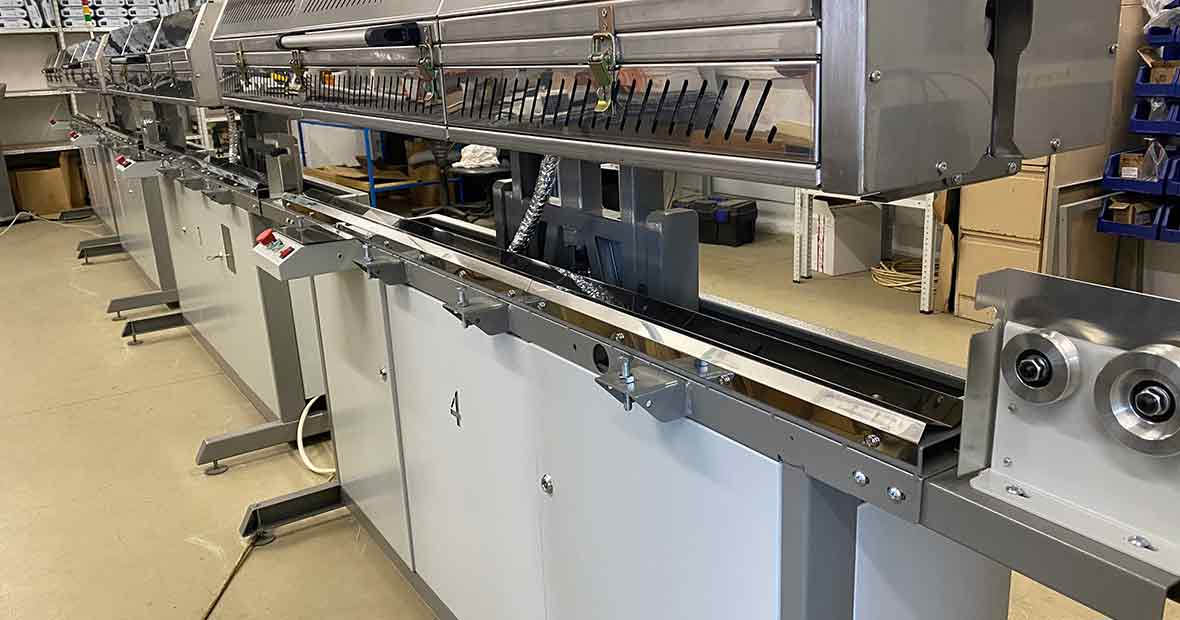
Infrared tunnel systems are a type of technology commonly used in various industries, such as manufacturing, automotive, and food processing. These systems use infrared radiation to heat objects or surfaces quickly and efficiently. The technology behind infrared tunnels allows for consistent and controlled heating, making them an ideal choice for processes that require precise temperature control.
Essential Maintenance Practices for Infrared Tunnel Systems
Routine Inspection of Infrared Tunnels
Regular inspections are crucial to ensure the proper functioning of infrared tunnel systems. During these inspections, trained technicians should carefully examine the system's components, including the heating elements, electrical connections, and control panels. Any signs of damage, wear, or malfunction should be promptly addressed to prevent further complications.
- Inspect heating elements for cracks, discoloration, or uneven heating.
- Check electrical connections for loose or corroded wires.
- Examine control panels for any error messages or abnormal readings.
- Verify that all safety features, such as emergency stop buttons, are in working condition.
Cleanliness and Dust Removal Policies
Keeping an infrared tunnel system clean is essential for its optimal performance and longevity. Dust and debris accumulation can hinder the system's efficiency and potentially cause damage to its components. Implementing strict cleanliness and dust removal policies is therefore crucial to maintaining the system's functionality.
- Regularly clean the heating elements to remove any residue or contaminants.
- Ensure that the interior of the tunnel is free from debris and dust particles.
- Use appropriate cleaning agents and tools to avoid damaging the system.
- Establish a cleaning schedule to ensure consistent maintenance.
Electrical System Maintenance Strategies
The electrical system of an infrared tunnel is a vital component that requires regular maintenance to ensure safe and efficient operation. Implementing proper electrical system maintenance practices can help prevent electrical malfunctions, reduce the risk of fires, and increase the system's lifespan.
- Regularly inspect electrical connections for signs of damage or wear.
- Tighten any loose connections and replace damaged wires or connectors.
- Check the electrical control panel for faults or errors.
- Ensure that the system is properly grounded to minimize electrical risks.
Wear and Tear Monitoring and Maintenance
Over time, components of an infrared tunnel system may experience wear and tear, which can affect the system's performance and efficiency. Monitoring and addressing wear and tear issues promptly can help prevent major breakdowns and extend the system's lifespan.
Regularly inspect all moving parts, such as conveyor belts or rollers, for signs of wear.
Lubricate moving parts according to the manufacturer's guidelines to minimize friction.
Replace worn-out parts, such as bearings or belts, to prevent further damage.
Keep a record of maintenance activities and component replacements for future reference.
Safety Precautions Specifically for Infrared Tunnels
Implementing Strict Access Control
To ensure the safety of personnel and prevent unauthorized access to infrared tunnel systems, implementing strict access control measures is essential. Limiting access to trained and authorized individuals helps minimize the risk of accidents and ensures that only qualified personnel operate and maintain the system.
- Establish a clear access control policy that outlines who can enter the infrared tunnel area.
- Use access control systems such as key cards or biometric scanners to restrict entry.
- Regularly update and maintain the list of authorized personnel.
- Provide proper training on access control procedures and emphasize their importance.
Proper Use of Safety Equipment
Using appropriate safety equipment is vital when working with infrared tunnel systems. This equipment helps protect individuals from potential hazards and minimizes the risk of accidents.
- Ensure that all operators and maintenance personnel are equipped with the necessary personal protective equipment (PPE), such as heat-resistant gloves, safety glasses, and protective clothing.
- Regularly inspect and replace damaged or worn-out safety equipment.
- Provide training on the proper use and maintenance of safety equipment.
Training and Education on Infrared Tunnel Operation Safety
Proper training and education on infrared tunnel operation safety are crucial to prevent accidents and ensure the well-being of all personnel involved. By providing comprehensive training programs, companies can equip their employees with the necessary knowledge and skills to operate the system safely.
- Develop training programs that cover the operation, maintenance, and safety protocols of infrared tunnel systems.
- Provide training sessions regularly and ensure that all personnel undergo refresher courses.
- Emphasize the importance of following safety guidelines and procedures at all times.
- Encourage open communication and reporting of safety concerns or incidents.
Regular Safety Audit Procedures
Conducting regular safety audits is an effective way to identify potential safety hazards and ensure compliance with safety regulations and guidelines. These audits help identify areas for improvement and enable companies to take proactive measures to enhance safety protocols and practices.
- Schedule regular safety audits to assess the overall safety of the infrared tunnel system.
- Review safety procedures, protocols, and documentation for accuracy and effectiveness.
- Identify any shortcomings or areas that require improvement and develop action plans to address them.
- Involve employees in the safety audit process to gather valuable insights and feedback.
Addressing Common Problems in Infrared Tunnel Systems
Infrared tunnel systems may encounter common problems that can affect their performance and efficiency. By promptly addressing these issues, companies can minimize downtime and ensure the system's optimal operation.
Technological Advancements in Infrared Tunnel Maintenance
As technology continues to advance, new innovations and technological advancements are being introduced to enhance the maintenance and safety of infrared tunnel systems. These innovations aim to improve efficiency, reduce risks, and prolong the system's lifespan. In conclusion, proper maintenance and safety considerations are essential for the effective operation of infrared tunnel systems. By implementing routine inspections, cleanliness policies, electrical system maintenance strategies, and wear and tear monitoring, companies can ensure the longevity and efficiency of their systems. Additionally, implementing safety precautions, providing appropriate training, and conducting regular safety audits help minimize accidents and protect personnel. As technology evolves, embracing innovations and technological advancements can further enhance the maintenance and safety of infrared tunnel systems.